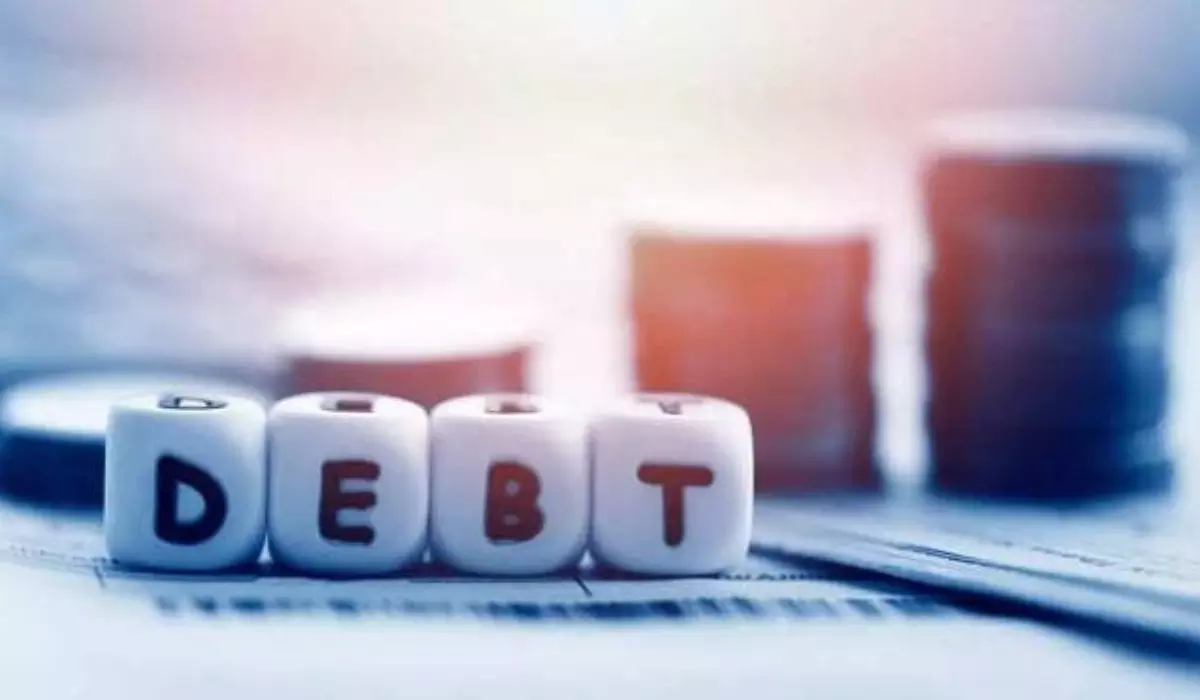India's debt stands at Rs 155.6 lakh crore in March 2023
The debt of state governments at the end of 2022-23 is estimated to be about 28 per cent of GDP
image for illustrative purpose

New Delhi: The central government's debt stood at Rs 155.6 lakh crore or 57.1 per cent of the GDP at the end of March 2023, Parliament was informed on Tuesday.
"The Central Government's debt was Rs 155.6 lakh crore as on March 31, 2023. It has reduced from 61.5 per cent of GDP in 2020-21 to 57.1 per cent of GDP in FY 2022-23," Minister of State for Finance Pankaj Chaudhary said in a written reply to the Rajya Sabha. The debt of state governments at the end of 2022-23 is estimated to be about 28 per cent of GDP.
Replying to another question, Chaudhary said the Gross Fixed Capital Formation (GFCF) in the Indian economy has increased from Rs. 45.41 lakh crore (constant 2011-12 prices) in 2018-19 to Rs 54.35 lakh crore in 2022-23 (Provisional Estimates).
"The government is implementing the 'Scheme for Special Assistance to States for Capital Expenditure' (2020-21 & 2021-22) and 'Scheme for Special Assistance to States for Capital Investment' (2022-23 & 2023-24)," he said.
The government approved and released special assistance (loan) in the form of a 50-year interest-free loan for capital expenditure on capital projects in sectors like health, education, irrigation, and power etc for capital expenditure for different States, he said.
During 2023-24, Rs 84,883.90 crore have been sanctioned under Scheme for Special Assistance to States for Capital Expenditure/Investment to various states, he said, adding Rs 29,517.66 crore have been disbursed so far during this fiscal.
In response to another question, he said the government's roadmap for making India a $5 trillion economy comprises focusing on growth at the macro level and complementing it with all-inclusive welfare at the micro level, promoting digital economy and fintech, technology-enabled development, energy transition and climate action and relying on a virtuous cycle of investment and growth.
The government's road map was put into effect in 2014, he said, adding major reforms - including Goods and Services Tax (GST), Insolvency and Bankruptcy Code (IBC), a significant reduction in the corporate tax rate, the Make in India and Start-up India strategies and Production Linked Incentive Schemes, among others - have been implemented. It has also focused on a capex-led growth strategy to support economic growth and attract investment from the private sector, increasing its capital investment outlay substantially during the last three years, he said.
"Central Government's capital expenditure has increased from 2.15 per cent of GDP in 2020-21 to 2.7 per cent of GDP in 2022-23. The Union Budget 2023-24 has taken further steps to sustain the high growth of India's economy," he said. These include a substantial increase in capital investment outlay for the third year in a row by 33 per cent to Rs 10 lakh crore (3.3 per cent of GDP).
Direct capital investment by the Centre is also complemented by Grants-in-Aid to States for the creation of capital assets, he said. The 'Effective Capital Expenditure' of the Centre was accordingly budgeted at 13.7 lakh crore (4.5 per cent of GDP) for 2023-24. This strong push given by the government is also expected to crowd in private investment and propel economic growth, he said.
The government has taken various measures to bring down the fiscal deficit as per cent of GDP, which includes efforts to improve ease of tax compliance and expenditure rationalisation, he said in reply to a question.
Further, in line with the announcement made in the budget Speech for 2021-22, he said the government is pursuing the broad path of fiscal consolidation to attain a level of fiscal deficit lower than 4.5 per cent of GDP by FY 2025-26.

